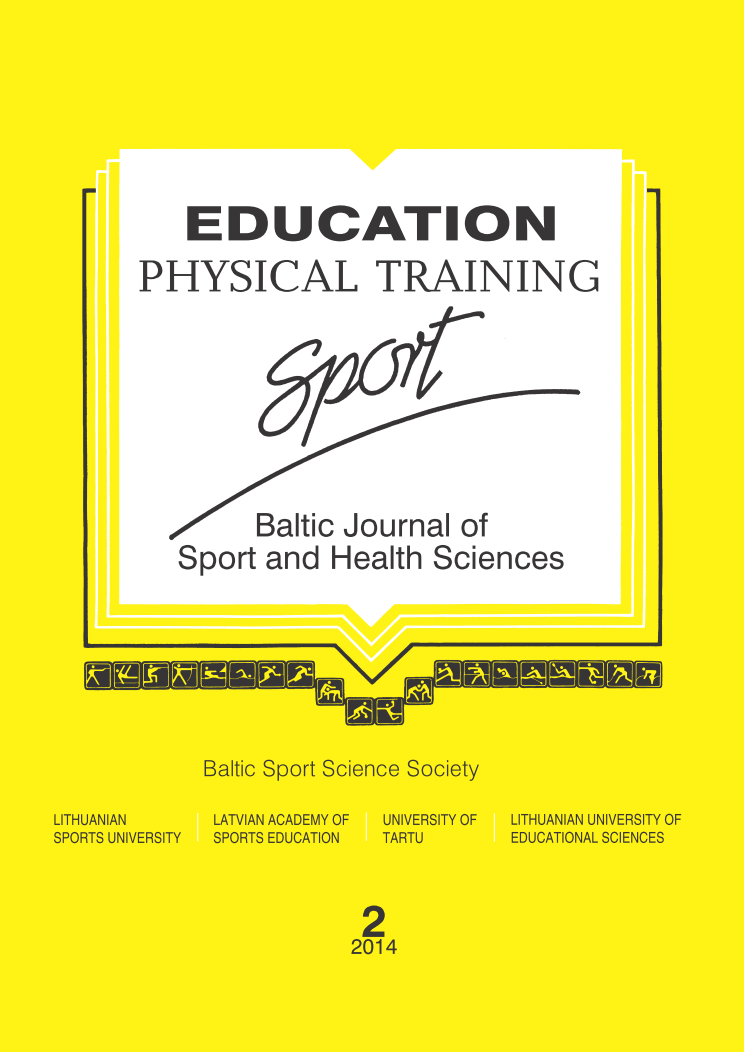The Relation between the Sociocultural Attitudes Towards Appearance and the Lifestyle and Self-Esteem of Adolescents
Abstract
Background. The adolescents seeking to conform to the ideal appearance associate the reduction of weight
with smoking and alcohol consumption (Haley, Hedberg, & Leman, 2010) or go on a diet instead of increasing their
physical activity (Liechty, 2010). The adolescents dissatisfied with their body have lower self-esteem (Neumark-
Sztainer et al., 2006). In this study we assumed that the sociocultural attitudes towards appearance would be
associated with adolescents’ harmful lifestyle and lower self-esteem. Research aim was to disclose the relation
between the sociocultural attitudes towards appearance of adolescents and their lifestyle and self-esteem.
Methods. The research was carried out in Kaunas schools (n = 16) using the method of written survey. In total,
805 adolescents were surveyed, 329 (41.1%) out of them were boys. The mean age (SD) of the respondents was
17.23 (0.6) years. Instruments: Sociocultural Attitudes Towards Appearance Questionnaire-3 SATAQ-3-L
(Thompson, van den Berg, Roehrig, Guarda, & Heinberg, 2004), Rosenberg Self-Esteem Questionnaire (Rosenberg,
1989). Physical activity (PA) was determined using the questions from the international study Health Behaviour in
School-Aged Children. The frequency of dieting and having harmful habits were determined by individual questions.
Results. The weight of the majority of adolescents (75.5%) was normal. The numbers of adolescents were
as follows: those who smoked (39.8%), consumed alcohol (80.5%), were on diet (36.8%), and had low levels of
physical activity (74.4%). The adolescents who smoked, consumed alcohol and were on diet had significantly higher
scores in all SATAQ subscales. Physically active adolescents were more striving to meet the Internalization of
athletic body image. In the groups of boys and girls, BMI was related to more frequent sociocultural pressures
(p < .01) and more frequent dieting (p < .01). In the group of boys, the frequency of smoking was related to lower
self-esteem (p < .05). In the group of girls, sociocultural pressures were related to lower self-esteem (p < .05).
Conclusion. The sociocultural attitudes towards appearance of adolescents are related to more harmful lifestyle
and lower self-esteem. Therefore, health literacy of the adolescents has to be increased by teaching proper attitudes
towards their bodies, appropriate diet, and exercising.
Keywords: sociocultural attitudes towards appearance, body image, lifestyle, physical activity, self-esteem.
Downloads
Published
Issue
Section
License
Copyright (c) 2018 Baltic Journal of Sport and Health Sciences

This work is licensed under a Creative Commons Attribution 4.0 International License.






